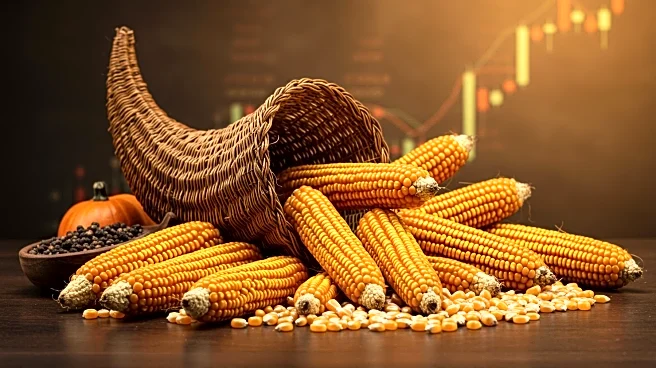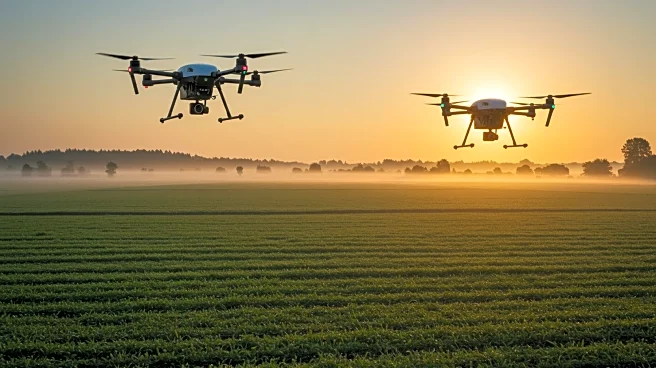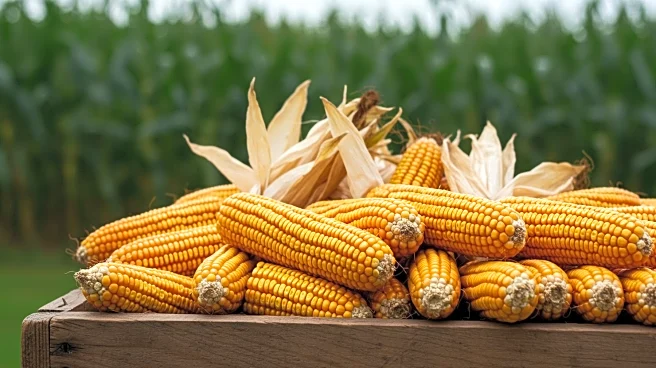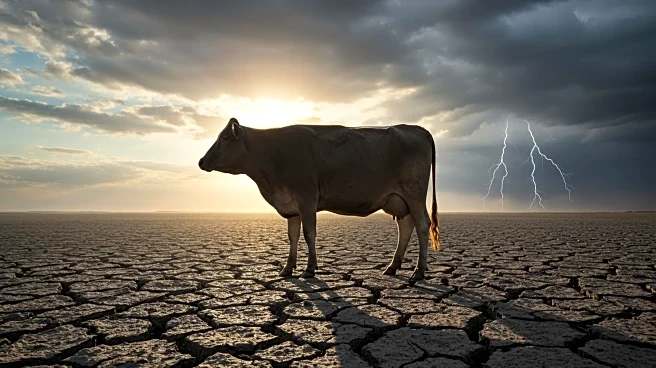What's Happening?
The August 2025 WASDE Report projects a record U.S. corn production of 16.7 billion bushels, driven by increased harvested area and a record yield of 188.8 bushels per acre. The report also highlights a tighter U.S. wheat supply, with ending stocks reduced to 869 million bushels, marking the lowest global wheat stocks since 2015/16. Soybean production is trimmed due to a smaller harvested area, despite higher yields. U.S. cotton production faces a sharp cut due to drought conditions in the Southwest, leading to increased prices. The report reflects mixed trends across rice, sugar, livestock, and dairy sectors, with adjustments in supply and price forecasts.
Why It's Important?
The WASDE Report's projections have significant implications for U.S. agriculture and global commodity markets. The record corn production could influence domestic and international trade, potentially lowering prices and affecting farmers' income. The reduced wheat stocks may lead to increased prices, impacting food industries and consumers. The cut in cotton production due to drought highlights the vulnerability of agriculture to climate conditions, affecting textile industries. These mixed commodity outlooks could lead to shifts in market strategies and policy decisions, impacting stakeholders across the agricultural supply chain.
What's Next?
Stakeholders in the agricultural sector may need to adjust their strategies in response to the WASDE Report's projections. Farmers might consider diversifying crops or investing in drought-resistant technologies. Policymakers could focus on supporting affected industries and addressing climate-related challenges. The report may also influence future trade negotiations and market dynamics, as countries respond to changes in supply and demand.
Beyond the Headlines
The report underscores the importance of sustainable agricultural practices and climate resilience. The impact of drought on cotton production highlights the need for investment in water management and climate adaptation strategies. Long-term shifts in commodity markets could drive innovation in agricultural technologies and practices, promoting sustainability and efficiency.











